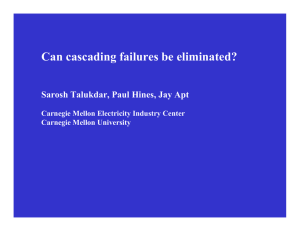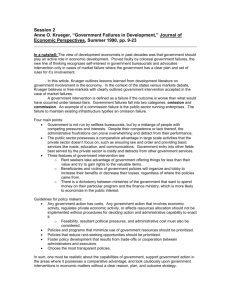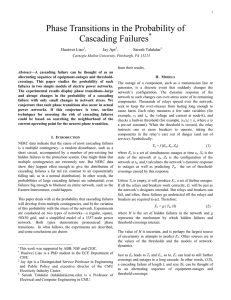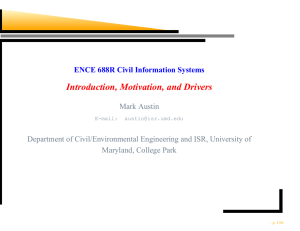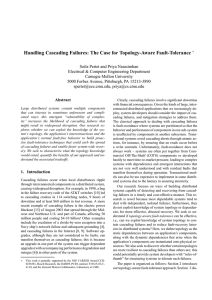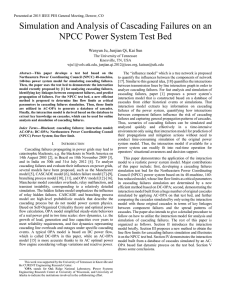PowerPoint **** - Arizona State University
advertisement
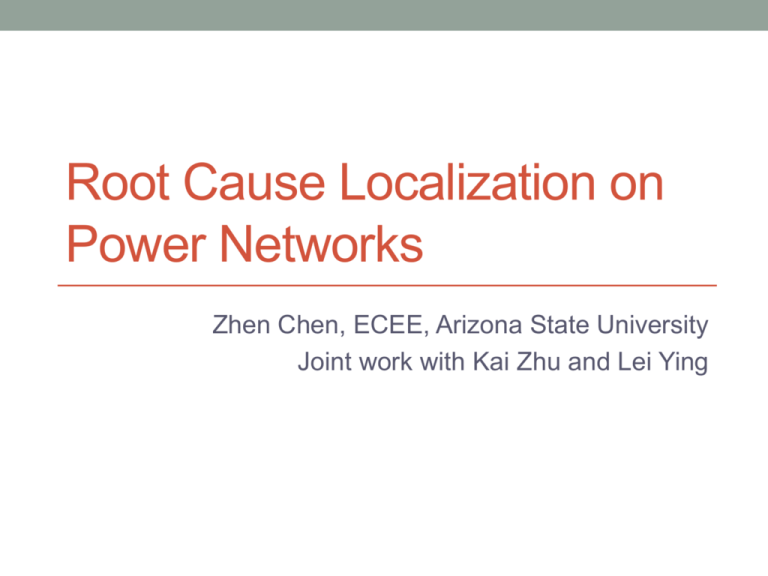
Root Cause Localization on Power Networks Zhen Chen, ECEE, Arizona State University Joint work with Kai Zhu and Lei Ying Locate Root Cause on Power Networks • Questions we are interested: • How to locate the root cause on power networks? • Which information can be used to locate the root cause of cascading failures on power networks? • Objective: develop high-performance algorithms to find the root cause of cascading failures on power networks. Similarities to Information Source Detection • Cascading failures on power networks: • The failure of some transmission lines leads to the outage of other transmission lines in the power network. • Similar to an information diffusion process. Related work: Information detection Can we use source existing information source (Shah&Zaman’10’11’12; Luo,Tay&Leng’12; Prakash, detection algorithms to locate the root Vrekeen&Faloubsos’12; Zhu&Ying’12’13;…) cause of cascading failures? Propagation of Cascading Failures • The spread of cascading failures: • Ohm’s and Kirchhoff’s laws. • Information does not necessarily diffuse according to physical topology of the power network. • The power network topology does not capture the dependency of the transmission lines. Related work: Cascading failures in power networks (Chen,Throp&Dobson’05; Bernstein,Bienstock, Hay,etc’2014; Xiao&Yeh’11;…) Can not directly apply information source detection algorithms to power networks! Correlation Network ( Zhang,Liu,Yao,etc’13) • It models the influence of one transmission line to the others. • DPij : the change of power flow on line j due to the outage of line i . • The correlation network: a weighted complete graph with each node representing a transmission line. 1 Measure the wij = DPij DPji correlation of failures + n n between two å DPkj å DPik transmission lines. k=1 k=1 Diffusion on the Correlation Network a e b d c 4-bus power system Correlation network Diffusion on the Correlation Network a e b d c Greedy Algorithm a Step 1: calculate the normalized average infection time: 0.6 0.5 0.9 e 1 3 b 2 0.5 0.8 d 0.7 0.5 0.6 0.5 c 4 t avg = 2.5 Greedy Algorithm a Step 2: Include a node into the initial infection spreading tree. 0.75 Step 3: Add the node with infection time observed to the infection 0.9 spreading tree 0.6 0.5 e 1 3 2 0.5 0.8 b 5.25 d 0.7 0.5 0.5 0.5 c 4 Step 4: Add other Step 5: Calculate infected nodes to the the cost. infection spreading tree. Assign infection time. td = tc + mcd = 5.25 ta = tb - mab = 0.75 Experiments Power systems: • IEEE 300-bus system • Electricity transmission network of Great Britain (2224 buses) Cascading failures traces: 1. Remove a transmission line randomly 2. Calculate the new power flow allocation 3. Remove overloaded transmission lines 4. Repeat Step 2 and Step 3 until no new overloaded transmission lines. Experiments CR: Cost-based ranking TR: Tree-based ranking Application to Other Networks The greedy algorithm can be used to detect source on weighted graphs. The network of air traffic volume between US airports (Dianati’15) 13 Conclusions • Combined the correlation network with information source detection • Developed a cost-based approach and proposed a greedy algorithm to locate the root cause • Evaluated performance on IEEE 300-bus power network and Great Britain power network. Thank you! Q&A





